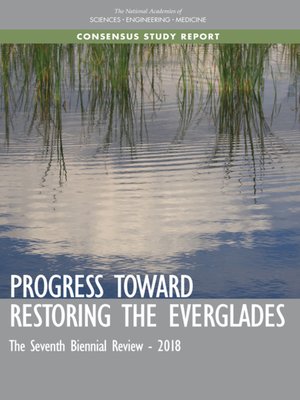Progress Toward Restoring the Everglades
ebook ∣ The Seventh Biennial Review--2018
By National Academies of Sciences, Engineering, and Medicine

Sign up to save your library
With an OverDrive account, you can save your favorite libraries for at-a-glance information about availability. Find out more about OverDrive accounts.
Find this title in Libby, the library reading app by OverDrive.



Search for a digital library with this title
Title found at these libraries:
| Library Name | Distance |
|---|---|
| Loading... |
During the past century, the Everglades, one of the world's treasured ecosystems, has been dramatically altered by drainage and water management infrastructure that was intended to improve flood management, urban water supply, and agricultural production. The remnants of the original Everglades now compete for water with urban and agricultural interests and are impaired by contaminated runoff from these two sectors. The Comprehensive Everglades Restoration Plan (CERP), a joint effort launched by the state and the federal government in 2000, seeks to reverse the decline of the ecosystem. The multibillion-dollar project was originally envisioned as a 30- to 40-year effort to achieve ecological restoration by reestablishing the natural hydrologic characteristics of the Everglades, where feasible, and to create a water system that serves the needs of both the natural and the human systems of South Florida.
Over the past two years, impressive progress has been made in planning new CERP projects, and the vision for CERP water storage is now becoming clear. Construction and completion of authorized CERP projects will likely take several decades, and at this pace of restoration, it is even more imperative that agencies anticipate and design for the Everglades of the future.
This seventh biennial review assesses the progress made in meeting the goals of the CERP and provides an in-depth review of CERP monitoring, with particular emphasis on project-level monitoring and assessment. It reviews developments in research and assessment that inform restoration decision making, and identifies issues for in-depth evaluation considering new CERP program developments, policy initiatives, or improvements in scientific knowledge that have implications for restoration progress.







